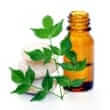Background
- Wormseed (Chenopodium ambrosioides, Dysphania ambrosioides) is native to Central and South America and the Caribbean. Its name comes from the centuries-old use of the plant by the Mayan people of Central America to treat intestinal worms. Wormseed has also been used traditionally to treat asthma and dysentery and, in Europe and Northern Africa, to relieve menstrual cramps. Wormseed was used by the Aztecs to flavor food and is an important ingredient in Mexican cooking today.
- The most common use of wormseed is the treatment of infection with parasites, such as worms. For this use, wormseed is taken by mouth. The active ingredient in wormseed is ascaridole. However, wormseed is toxic, and its use may result in poisoning and death.
- Further high-quality human study is needed before conclusions may be made on the use of American wormseed for any condition.
References
Natural Standard developed the above evidence-based information based on a thorough systematic review of the available scientific articles. For comprehensive information about alternative and complementary therapies on the professional level, go to . Selected references are listed below.
- Cruz GV, Pereira PV, Patricio FJ, et al. Increase of cellular recruitment, phagocytosis ability and nitric oxide production induced by hydroalcoholic extract from Chenopodium ambrosioides leaves. J Ethnopharmacol 2007;111(1):148-154.
View Abstract - De Almeida MA, Domingues LF, Almeida GN, et al. [Effects of aqueous extracts of Mentha piperita L. and Chenopodium ambrosioides L. leaves in infective larvae cultures of gastrointestinal nematodes of goats]. Rev Bras Parasitol Vet 2007;16(1):57-59.
View Abstract - Efferth T, Olbrich A, Sauerbrey A, et al. Activity of ascaridol from the anthelmintic herb Chenopodium anthelminticum L. against sensitive and multidrug-resistant tumor cells. Anticancer Res 2002;22(6C):4221-4224.
View Abstract - Gadano AB, Gurni AA, Carballo MA. Argentine folk medicine: genotoxic effects of Chenopodiaceae family. J Ethnopharmacol 2006;103(2):246-251.
View Abstract - Gillij YG, Gleiser RM, Zygadlo JA. Mosquito repellent activity of essential oils of aromatic plants growing in Argentina. Bioresour Technol 2008;99(7):2507-2515.
View Abstract - Jardim CM, Jham GN, Dhingra OD, et al. Composition and antifungal activity of the essential oil of the Brazilian Chenopodium ambrosioides L. J Chem Ecol 2008;34(9):1213-1218.
View Abstract - Kumar R, Mishra AK, Dubey NK, et al. Evaluation of Chenopodium ambrosioides oil as a potential source of antifungal, antiaflatoxigenic and antioxidant activity. Int J Food Microbiol 2007;115(2):159-164.
View Abstract - Molina-Salinas GM, Ramos-Guerra MC, Vargas-Villarreal J, et al. Bactericidal activity of organic extracts from Flourensia cernua DC against strains of Mycobacterium tuberculosis. Arch Med Res 2006;37(1):45-49.
View Abstract - Monzote L, Garcia M, Montalvo AM, et al. In vitro activity of an essential oil against Leishmania donovani. Phytother Res 2007;21(11):1055-1058.
View Abstract - Monzote L, Montalvo AM, Scull R, et al. Activity, toxicity and analysis of resistance of essential oil from Chenopodium ambrosioides after intraperitoneal, oral and intralesional administration in BALB/c mice infected with Leishmania amazonensis: a preliminary study. Biomed Pharmacother 2007;61(2-3):148-153.
View Abstract - Monzote L, Montalvo AM, Scull R, et al. Combined effect of the essential oil from Chenopodium ambrosioides and antileishmanial drugs on promastigotes of Leishmania amazonensis. Rev Inst Med Trop Sao Paulo 2007;49(4):257-260.
View Abstract - Nascimento FR, Cruz GV, Pereira PV, et al. Ascitic and solid Ehrlich tumor inhibition by Chenopodium ambrosioides L. treatment. Life Sci 2006;78(22):2650-2653.
View Abstract - Park IK, Choi KS, Kim DH, et al. Fumigant activity of plant essential oils and components from horseradish (Armoracia rusticana), anise (Pimpinella anisum) and garlic (Allium sativum) oils against Lycoriella ingenua (Diptera: Sciaridae). Pest Manag Sci 2006;62(8):723-728.
View Abstract - Patricio FJ, Costa GC, Pereira PV, et al. Efficacy of the intralesional treatment with Chenopodium ambrosioides in the murine infection by Leishmania amazonensis. J Ethnopharmacol 2008;115(2):313-319.
View Abstract - Ruffa MJ, Ferraro G, Wagner ML, et al. Cytotoxic effect of Argentine medicinal plant extracts on human hepatocellular carcinoma cell line. J Ethnopharmacol 2002;79(3):335-339.
View Abstract - Sowemimo AA, Fakoya FA, Awopetu I, et al. Toxicity and mutagenic activity of some selected Nigerian plants. J Ethnopharmacol 2007;113(3):427-432.
View Abstract







